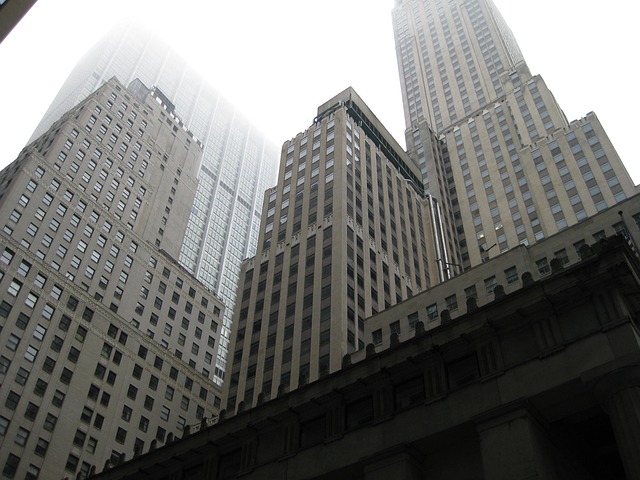Glulam, an advanced wood engineering marvel, offers remarkable structural integrity, aesthetic appeal, and sustainability in contemporary architecture. Its versatility allows for creative forms, open spaces, and complex geometric structures, revolutionizing modern building design while reducing environmental impact through renewable resources and extended lifespans. Iconic structures like Japan's T-House and Seattle Library showcase glulam's potential as a game-changer in architectural aesthetics and structural engineering.
“Discover the revolutionary world of Glulam architecture, where strength meets design. This natural, sustainable building material is transforming the construction industry with its exceptional glulam structural strengths and eco-friendly properties. Explore how glulam offers boundless creative possibilities in design flexibility, while showcasing its modern aesthetic appeal. From logging to iconic structures worldwide, delve into the comprehensive guide that uncovers the entire glulam construction process and its inspiring case studies.”
- Glulam's Structural Strength and Sustainability
- Design Flexibility and Creative Possibilities
- Aesthetic Appeal: Modern Beauty in Timber
- Construction Process: From Logging to Building
- Case Studies: Iconic Glulam Structures Worldwide
Glulam's Structural Strength and Sustainability
Glulam, or glued laminated wood, is renowned for its exceptional structural strength and sustainability. Its core consists of several layers of high-strength wood veneers, bonded together with strong adhesives to create a single, incredibly robust component. This innovative engineering technique allows glulam to support significant loads, making it a preferred choice for modern architectural designs that demand both beauty and practicality.
Beyond its structural advantages, glulam offers a compelling green building solution. As a renewable resource, wood is an environmentally friendly choice, and glulam’s long-lasting properties further contribute to its sustainability. The material’s durability ensures structures built with glulam can stand the test of time, reducing the need for frequent repairs or replacements, thereby minimizing construction waste and lowering environmental impact.
Design Flexibility and Creative Possibilities
Glulam architecture design offers unparalleled flexibility and creative possibilities. This innovative construction method utilizes glued laminates, or glulam, which are engineered wood elements that can be crafted into complex shapes and sizes. By combining multiple layers of wood veneers, glulam components can span greater distances with reduced support, allowing for open and uninterrupted interior spaces. Architects can design unique forms and organic structures that might not be feasible with traditional building materials.
Moreover, the versatility of glulam extends beyond aesthetic appeal. It is particularly advantageous in projects like bridge building, where glulam applications offer lightweight yet robust solutions. The environmental benefits of glulam building systems also stand out, as they can be made from sustainable wood sources and provide eco-friendly alternatives to conventional materials. This versatility makes glulam a preferred choice for modern architects seeking both functionality and design excellence.
Aesthetic Appeal: Modern Beauty in Timber
The world of architecture has witnessed a remarkable rise in the appreciation of natural materials, and timber is at the forefront of this movement. Glulam, a modern engineering technique using laminated timber, brings a unique aesthetic appeal to contemporary designs. This innovative approach allows for stunning structural elements that double as design statements, showcasing the beauty of wood in a whole new light.
Glulam architecture design trends highlight the versatility and visual allure of timber, especially when it comes to complex geometry. From elegant curved beams to intricate lattice structures, glulam offers solutions that were once unimaginable with traditional construction methods. Furthermore, glulam panels for roof systems provide not only structural integrity but also a warm and inviting ambiance, transforming rooftops into artistic masterpieces.
Construction Process: From Logging to Building
The construction process of glulam (glulaminated timber) architecture begins with careful logging and selection of high-quality wood resources. This sustainable approach ensures that each component is meticulously crafted from nature’s bounty. Skilled artisans then transform these raw materials into engineered glulam beams, which are the backbone of modern wood architecture. These beams offer exceptional strength and stability due to their advanced laminating technique, making them ideal for creating contemporary designs.
Glulam’s versatility allows architects to explore various design possibilities, from intricate curved structures to expansive spans. When used in custom home building, glulam provides a unique aesthetic appeal while offering structural integrity. Its ability to span long distances without intermediate supports has revolutionized modern wood architecture, enabling designers to craft bold and innovative spaces that seamlessly blend with nature.
Case Studies: Iconic Glulam Structures Worldwide
Glulam architecture has left its mark globally, with iconic structures showcasing its unique potential. These remarkable buildings highlight the versatility and aesthetic appeal of glulam panels for roof systems, while also demonstrating their role in shaping sustainable infrastructure. From breathtaking bridges to innovative public spaces, case studies around the world exemplify the material’s strength and design flexibility.
One notable example is the T-House in Japan, a modern residence that seamlessly integrates natural materials with contemporary design. Its glulam structural analysis software-aided construction ensures precision and stability, contributing to its renowned architectural beauty. Similarly, the Seattle Library in the U.S. showcases glulam’s ability to create dramatic interiors with sweeping, organic forms, further reinforcing its position as a game-changer in modern architecture, emphasizing a commitment to both aesthetic appeal and structural integrity.
Glulam architecture design offers a unique blend of strength, sustainability, and aesthetic appeal. With its exceptional structural properties, glulam enables innovative construction methods and opens doors to creative design possibilities. From iconic global structures to local projects, this versatile timber product continues to shape the modern landscape. By embracing glulam’s potential, architects and builders can create stunning, durable buildings that resonate with both functionality and beauty.







